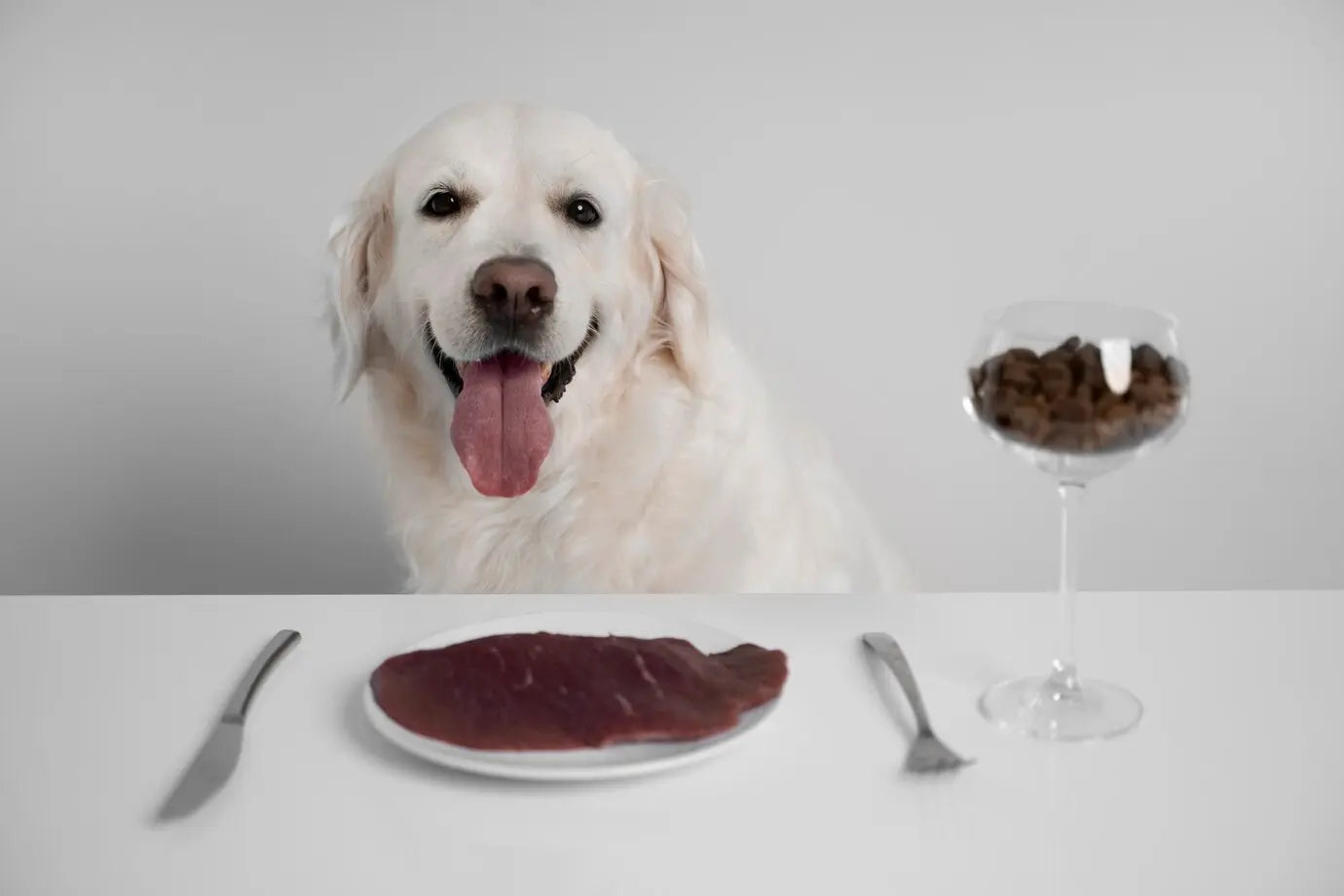Cancer in dogs is more common than many pet parents realise, affecting one in four canine companions in their lifetimes. While a cancer diagnosis can be heartbreaking, it doesn't have to be.
With advances in medicine, there is a lot we can do for our adorable dogs and help the fight against cancer. Many cancers in dogs can be easily cured with modern treatments and care. Early detection and the right cancer treatment for dogs can significantly increase the chances of recovery and a better quality of life ahead.
Cancer in dogs - Common reasons
- Age: Many researches in canine health have discovered that older dogs are more likely to be diagnosed with cancer. This is due to a weaker immune system with age.
- Gender: Some research has also proved that female dogs are more prone to developing cancer than male dogs. This is also because mammary cancers are more likely to be diagnosed in female dogs.
- Neutered status of the dog: It has also been found that female dogs who were neutered early in life have a lesser chance of developing cancer later. Dogs who were neutered later or never neutered have a higher likelihood of developing cancers.
- Weight: Overweight dogs are prone to more health concerns than healthy dogs. Obesity can increase the risk of developing cancer in dogs. While obesity does not always mean they will develop cancer, it is still vital to help them maintain adequate weight through regular exercise and portion control.
- Diet: Diet plays a major role in developing serious diseases like cancer. Various pet foods contain cancer-causing toxins. Additionally, when the food is not stored well, there is a risk of mold formation, raising the risk of cancer severely.
- Breed of the dog: Certain dog breeds are at a higher risk of developing specific cancers than others. For instance, lymphoma in dogs affects Labrador retrievers and Golden retrievers more than the rest of the breeds. Similarly, beagles are more prone to bladder cancer in dogs.
Cancer in dogs - Life expectancy
Life expectancy for dogs diagnosed with cancer can vary as per the type and state of cancer. Since it commonly affects older dogs, some may die a natural death after diagnosis. In the more advanced and painful stage of cancer, many pet owners decide to euthanise the dog to ensure a compassionate and pain-free death.
Types of cancer in dogs

There are many different types of cancer in dogs, and here are the most common ones:
- Mast cell tumors - These are a form of skin cancer in dogs that mostly affect the mouth, lungs, skin and nose. They are graded as per their level of inflammation, location and level of differentiation. This cancer is commonly seen in bulldogs.
- Melanoma - Commonly seen in dobermans and chow chows, Melanoma is a common tumor of the mouth. These types of cancers are likely to be malignant.
- Lymphoma - Commonly known as blood cancer in dogs, lymphoma affects lymphocytes and lymphoid tissues, accounting for almost 20% of canine cancers. These cancers appear as swollen lymph nodes under the jaw, behind the knees and in front of the shoulders. They are commonly found in Golden retrievers.
- Bone cancer - Bone cancer in dogs is another common variant that typically affects giant and larger breeds of dogs like greyhounds and great danes.
- Hemangiosarcoma - Another highly malignant cancer, this largely affects the spleen and heart. It can spread rapidly and is usually diagnosed by the time it reaches an advanced stage.
- Mammary gland carcinomas - Also known as breast cancer in dogs, it is a commonly found cancer in female dogs but often goes unnoticed as it may appear as small nodules around the nipple area. However, it can quickly grow into a painful tumor. These tumors can be cured with surgery in many cases.
Cancer in dogs - Is it preventable?
Since the cause of cancer in dogs is mostly unknown, there is no certain way to prevent cancer. However, a lean body and chemical-free food can reduce the risk. A diet rich in natural and healthy foods can not only reduce the risk of cancer in dogs but also help with overall growth and a better quality of life.
Cancer in dogs - Possible symptoms
- Difficulty breathing
- Lack of appetite
- Visible lump or mass
- Sudden weight loss
- Unexplained swelling
- Lameness
- Diarrhea
- Persistent vomiting
- Enlarged abdomen
Cancer in dogs - Is it curable?
Whether the cancer in dogs is treatable or not depends upon the location, severity, type and age of the dog. If you feel your dog might have cancer, it is suggested to get an immediate diagnosis to give your dog a better chance at recovery and positive outcomes.
Treatment of cancer in dogs

- Surgery
Depending on the severity and location of your dog's cancer, surgery alone may be sufficient to entirely remove the malignant cells from their body. Surgery is often the first line of defense against exterior and localised cancers.
- Chemotherapy
Chemotherapy is the only medication that can effectively treat cancer cells throughout the body at the same time. Chemotherapy is generally a go-to treatment for dogs with cancer that has spread, viz the cancer is not just in the one place where it originated in the body. It can assist in locating and killing cancer cells throughout the body.
- Radiation therapy
Radiation therapy uses the same technology as an x-ray machine but at a higher dose to kill cancer cells. The radiation targets the faulty gene in the cell, which causes the cell to divide fast and thus become malignant. Radiation therapy is frequently used in conjunction with some of the other treatments indicated above, although radiation alone has been shown to significantly reduce tumor size.
- Combination therapy
Combination therapy is exactly what it sounds like: it combines two or more anticancer medications, or treatment modalities, to more effectively target cancer cells in the body. This is one of the most prevalent ways used to treat cancer in pets because it helps the patient to maintain their quality of life through treatment and focus their emotional and mental well-being while also improving their physical health.
A final word
While a cancer diagnosis in dogs can be overwhelming, the right care including a nutritious, balanced diet can make a significant difference in their quality of life. Fresh, natural food supports overall health and boosts immunity, giving your furry friend the strength they need. At BLEP Foods, we believe that every dog deserves wholesome, real ingredients to live their happiest, healthiest life!
Looking to explore more healthy treats and care tips for your furry friend? Check out our other guides like Can Dogs Eat Apples?, Can Dogs Eat Blueberries?, Why Do Dogs Licks You?, Can Dogs Eat Strawberries?, Can dogs Eat Mango?, Dog Food for Weight Loss, Raw v/s cooked meat for dogs, Home Remedies to cure tick fever, Common Skin Problems in Dogs, Finding Good Dog Food in India, How many times should I feed my dog?, Things you should do to keep your pet healthy, Types of Dog Food, and How Prebiotics and Probiotics can improve your dog's digestion. Each guide is designed to help you make better food choices for your dog because a happy dog starts with the right diet.
Sources
https://www.webmd.com/pets/dogs/features/dogs-and-cancer-get-the-facts
https://www.ranchovillagevet.com/site/blog/2023/06/15/signs-spread-cancer-dogs












